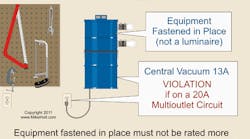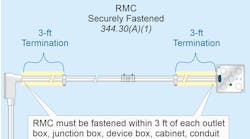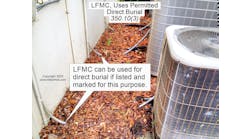Q. Are lighting outlets in dwelling units allowed on the same circuit as receptacle outlets?
A. An individual branch circuit is permitted to supply any load for which it's rated, but in no case is the load permitted to exceed the branch circuit ampere rating [210.23]. Branch circuits rated 15A or 20A supplying two or more outlets must only supply loads in accordance with 210.23(A), which says that a 15A or 20A branch circuit is permitted to supply lighting, equipment, or any combination of both. Except for temporary installations [590.4(D)], 15A or 20A circuits can be used to supply both lighting and receptacles on the same circuit.
Cord- and plug-connected equipment not fastened in place, such as a drill press or table saw, must not have an ampere rating more than 80% of the branch circuit rating [210.23(A)(1)]. UL and other testing laboratories list portable equipment (such as hair dryers) up to 100% of the circuit rating. The NEC is an installation standard, not a product standard, so it can't prohibit this practice. There really is no way to limit the load to 80% of the branch circuit rating if testing laboratories permit equipment to be listed for 100% of the circuit rating.
Equipment fastened in place (other than luminaires) must not be rated more than 50% of the branch circuit ampere rating if this circuit supplies luminaires, receptacles, or both [210.23(A)(2)], as shown in the Figure above.




